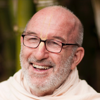Dhanurdhara Swami June 4th, 2001
New Ekachakra Dham
We begin the program again this morning at 7:30 AM. I am focusing my talks on the life of Srila Raghunatha dasa Goswami. We sit until almost until 2 PM with a short break for breakfast and Kana Porcelly’s grain ceremony. It feels like Mayapur or Ekachakra, where the dhama’s mercy mystically makes spiritual life easy.
Srila Prabhupada was once asked, “What is the result of chanting?” He answered with conviction, “More chanting!” Chanting purifies the heart and gives
attraction for chanting. Often we don’t experience that because we don’t give much effort to chanting. We surrender to the initial inertia of the modes and become inattentive, or don’t chant at all. Thankfully, that wasn’t at all the case today. Our chanting led to more chanting.
The story of Raghunatha dasa Goswami describes the power of Lord Nityananda’s mercy. It also promotes a very renounced life. Srila Krishna dasa Kaviraja comments on the stringent renunciation of Raghunatha dasa Goswami and the followers of Sri Caitanya Mahaprabhu:
“Renunciation is the basic principle sustaining the lives of Sri Caitanya Mahaprabhu’s devotees. Seeing this renunciation, Sri Caitanya Mahaprabhu, the
Supreme Personality of Godhead, is extremely satisfied.” (Cc., Antya-lila 6.220)
Raghunatha dasa Goswami’s renunciation attained such limits that eventually he was eating only the inner portion of outwardly rancid rice, but still not a drop of pride crossed his mind:
“If one’s heart has been cleansed by perfect knowledge and one has understood Krishna, the Supreme Brahman, he then gains everything. Why should such a person act like a debauchee by trying to maintain his material body very carefully?” (Cc., Antya-lila 6.314)
Renouncing the taste of Krishna prasadam? How is that devotional service? On the path of bhakti-marg the process of advancing is sadhu-sanga, not vairagya (renunciation). Vairagya is the path of jnanis, the seekers of moksa (liberation). What then exactly was it about the stringent and seemingly punishing renunciation of Raghunatha dasa Goswami that was so pleasing to Sri Caitanya Mahprabhu and how is this pastime relevant to us?
The point here is subtle. Raghunatha dasa Goswami was not focused on vairagya like the jnanis who count or analyze the material elements to distinguish it from spirit for the purpose of salvation. He was focused on his service exclusively for the pleasure of Sri Caitanya Mahaprabhu and as a result rejected anything of inconsequence to that service. In fact, his absorption in the pleasure of Sri Caitanya Mahaprabhu was so consummate that he simply had no concern or time for anything else. And what was his service as directly ordered by Sri Caitanya Mahaprabhu?
“Do not talk like people in general or hear what they have to say. You should not eat very palatable food, nor should you dress very nicely…. Do not expect honor, but offer all respect to others. Always chant the holy name of Krsna, and within you mind render service to Radha and Krishna in Vrindaban.” (Cc., Antya lila 6.236-37)
Srila Prabhupada comments on Dasa Raghunatha’s service:
“The principle of very rigidly carrying out the order of the spiritual master must be observed. The spiritual master gives different orders to different people. For example, Sri Caitanya Mahaprabhu ordered Jiva Goswami, Rupa Goswami, and Sanatana Goswami to preach and he ordered Raghuntha dasa Goswami to strictly follow the rules and regulations of the renounced order. All of the six Goswamis strictly followed the instructions of Sri Caitanya Mahaprabhu. This is the principle for progress in devotional service. After receiving an order from the spiritual master one must strictly try to execute that order. That is the way of success.” (Cc., Antya-lila 6.312, purport)
Now, how does Dasa Raghuntha’s example apply to us? Such severe renunciation would certainly be phalgu-vairagya (false renunciation), as it would force us to reject basic things needed for our service to Krishna?including many simple needs of life. Although it is not our service to imitate the extreme renunciation of Raghunatha dasa Goswami, we should follow his example. We can do this by giving up those things that have nothing to do with either our own devotional service, or our basic social and occupational responsibilities.
This pastime gives us nice meditation at whatever level we practice devotional service: What in my life is superfluous to my basic needs that can be renounced
to help me attain love of Godhead?
Brajajana is a wizard in the kitchen. I also like his manner of cooking. It’s a deep meditation, like that of a scientist. Gaura-Priya and he organized and cooked a superb feast that brought happiness to the assembled Vaishnavas. I counted 19 exotic offerings. My favorites: Navaratna-chira (fancy Bengali chira with panir, cashews, and a slightly sweet base), Meditteranean chira (with kalamata olives, feta, roasted peppers, and olive oil), and mango chira (chira soaked in kheer with perfectly ripened mangos).
The purpose of a festival is to gather devotees together to offer love to Krishna and share affection among themselves. A nice way to express love is the little details, the extras that express one’s special effort to please others. The clay pots for honoring the Cira-Dahi added an authenticity to the festival, but it was also a wonderful expression of affection for Lord Nityananda and his devotees, a desire to offer them the best, down to the details.
